During the Annecy International Animation Film Festival earlier this year, a panel was held with some of the Japanese directors who had their movies in competition. There was Director Keiichi Hara, known for his directing work on the Crayon Shin-Chan franchise and movies such as Summer Days with Coo and Colorful, who was presenting his latest movie, Lonely Castle in the Mirror. The other director was Tomohisa Taguchi, who has gained a lot of attention in the past few years by directing Akudama Drive, the Digimon Adventure Last Evolution Kizuna movie, and Bleach: Thousand-Year Blood War. He featured his movie The Tunnel to Summer, the Exit of Goodbyes, which ended up winning the Paul Grimault Award at the competition. The panel’s host was the ex-president of Telecom Animation, Mr. Kôji Takeuchi.
Kôji Takeuchi introduced himself as the director of the Tokyo Anime Award Festival, which is holding animation boot camps and workshops sponsored by the Japanese government. The program of those workshops varies among the students. It can either be pros, students, or children. They also held it in Singapore, Thailand, and Annecy. He was a producer who notably worked with Isao Takahata and Hayao Miyazaki. He also worked with Korea, France, and Italy, but this meeting’s goal in Annecy was to present the new Japanese animation through three crucial aspects:
This article would not have been possible without the help of our patrons! If you like what you read, please support us on Ko-Fi!
Introduction of movies
The first part of the panel dives into The Tunnel to Summer, presented by the director himself, Tomohisa Taguchi. He introduced the movie as a love story, focusing on the struggles of two young individuals and their journey to overcome personal traumas. Mr. Taguchi emphasized leaving room for audience interpretation rather than explaining every detail. Takeuchi commended the beauty of the film and urges people to watch it promptly, praising the impressive character acting the animation team was able to pull off.
Getting to Know the Directors
Mr. Taguchi shared insights into his approach to filmmaking, emphasizing the significance of portraying emotions through character movement and acting. Mr. Taguchi believes that emotions are mainly conveyed by movement and character acting, so he puts a lot of care into it. It is not only about the story itself.
As an example, the way a character holds an umbrella is important. At the end of the movie, the heroine of the film runs with an umbrella, and Mr. Taguchi was very picky about how she holds it. The umbrella means a lot to her, and she can’t drop it. So, instead of just holding it by the holder, she holds it in a certain way that expresses different emotions. Performance weighs more than the story at this moment. It’s a scene where the heroine holds an umbrella she got from the hero many, many years ago and never got the chance to return it. The umbrella has a lot of meaning, so it’s treated very precisely. It was very important to make sure that the performance matched the characterization.
Mr. Taguchi was very aware of the posture of the characters, how they stand, and the atmosphere that colors create. Some of it was prepared during the storyboard process.
For the character development it was thought about during the screen rendering phase and the character design phase. He affirmed that it was not too hard to transfer those intentions into the storyboard. It became more and more clear in his head as he went further into the storyboarding phase.
Brief Insight into the Japanese Anime Industry
Mr. Takeuchi then pointed out that Mr. Taguchi has a liking for live-action movies. Mr. Taguchi gave an explanation about 2D frames overlapping 3D live-action images and how he based his storyboard on these overlapping images. He asked if there is a clear distinction between live-action and animation for Mr. Taguchi and if he bases his 2D drawings on these 3D images. Mr. Taguchi answered by mentioning rotoscoping. He thinks Japanese anime is a little too real and that abstractions are needed. By doing so, you get the essence of performance and characters. Extraction is what makes animation what it is.
Mr. Takeuchi pointed out that in the US or Europe, we’re very familiar with pre-recording dialogue methods, but not so much in Japan. Nonetheless, he did use it for The Tunnel to Summer. They already had the storyboard, so they were able to do the pre-recording based on it, and they could animate more precisely to match the voice lines. In Japan, it’s more common to do the recording after everything. Mr. Takeuchi asked Mr. Taguchi to develop about it, but his answer was a little bit off-topic…
He said that in the Japanese anime industry, there is not enough time to keep up with the production. After-recording is done because there is usually only a little animation of talking. As soon as they have the recording, the director and 40 to 60 animators gather and try to base their animation and directing upon it. Then they have approximately between a month and a month and a half to finish a 30-minute film. As usual, the highlighted problem is that there are too many titles in production in Japan but very few good animators and directors. Due to that, it becomes very difficult to manage human resources.
Mr. Takeuchi clarified he wanted to know more about the clear differences between pre-recording and after-recording, both with the storyboard. After realizing his misunderstanding, Mr. Taguchi explained that he already used this method in the past. Being able to base animation on voice acting is very helpful in creating nuances and variations.
As the talk concluded, Mr. Taguchi briefly discussed his career path, starting as an assistant director and being an assistant producer for a long time. He eventually became a director thanks to another director, Tatsuya Igarashi, who noticed the storyboards he drew in his free time and offered him to work as an assistant director. He encourages aspiring creators not to give up, highlighting the support he received in his early career, trusting in the few people who are willing to sacrifice their time to help young artists to rise up. Mr. Taguchi also shared that he has projects in development, including a TV series called Bridge, in which overseas animators play a crucial role. He expressed openness to collaboration with international talent and invited motivated individuals to join the industry, emphasizing the global nature of animation work.
He ultimately suggested everyone to watch his movie, The Tunnel to Summer, the Exit of Goodbyes.
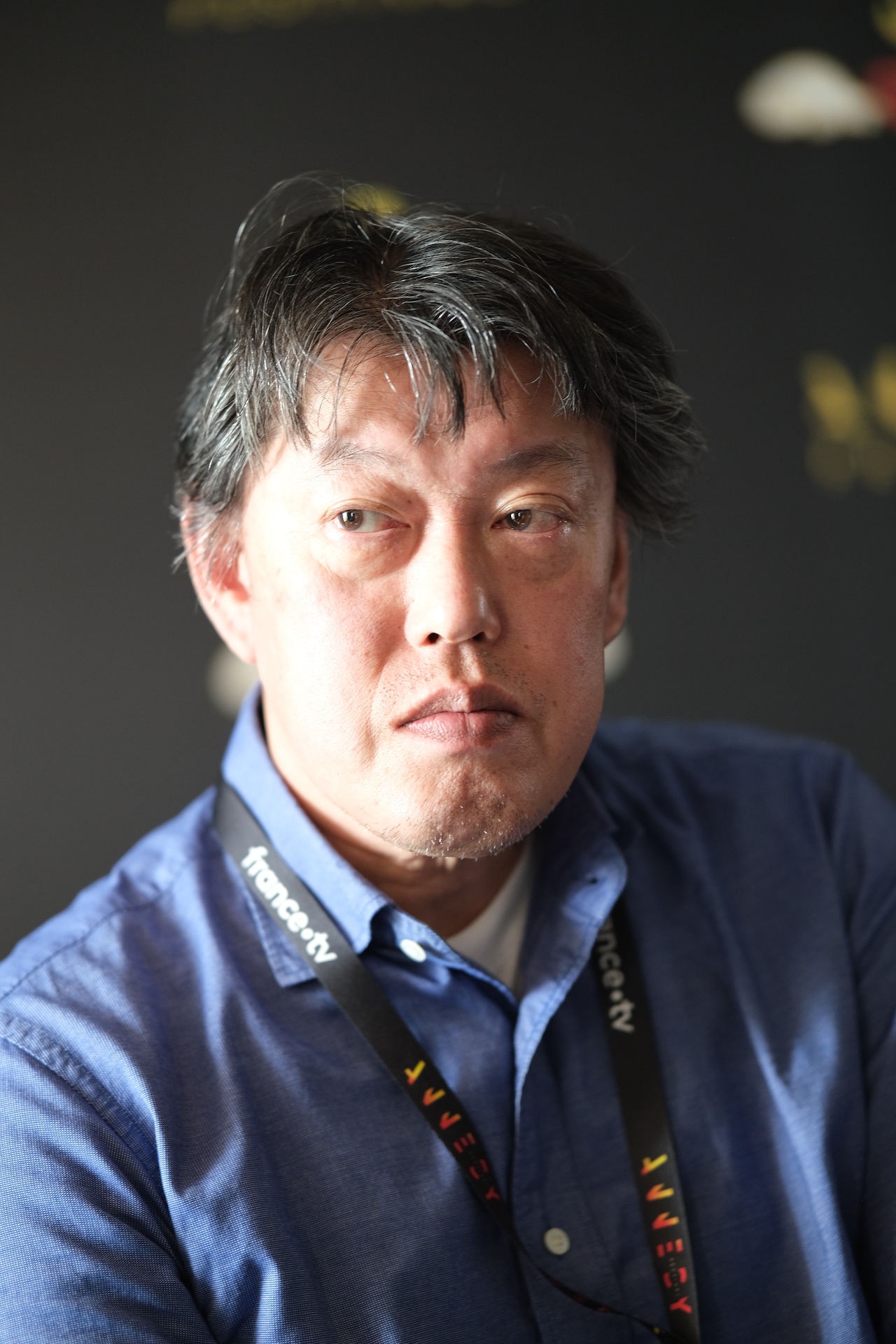
Then came Mr. Keiichi Hara’s turn. This was Mr. Hara’s fourth time in Annecy. He considers himself a veteran, both at the Annecy Festival and as an anime director in Japan. He meant to use his time at the panel to give people a bird’s-eye view of the current state of the Japanese animation industry.
His previous movie featured in Annecy, Colorful, deals with quite sensitive topics about middle schoolers, like a boy committing suicide caused by bullying and family issues and a girl engaging in enjô-kosai (teenage prostitution). In his view, they’re a big part of the current social problems in Japan.
His newest film, Lonely Castle in the Mirror, is about teenagers who don’t attend school. It’s a continuation of similar themes. In his eyes, the situation hasn’t gotten any better. He had given a speech about these issues before the screening of the movie at the festival. During the preceding year, 514 schoolkids had committed suicide. An all-time high since 1990, the year the government started tracking it. This made him realize how far from being done with these issues his country really is, and truly moved him.
In a class of 30-40 children, there’s usually a couple of kids that don’t attend. The true number is probably higher than that. What makes him really angry is that the government reports that there is a problem, but they try to pin the blame on the victims, even though bullying is usually the main cause. Bullies often don’t face any consequences for their actions and move on to their next target.
The original story is quite long- about 500 pages. Therefore, adapting it into a movie was quite a challenge. The most difficult part was condensing the story. In the original book, there were seven main characters. The movie was built on one of them, Kokoro, and the others were relegated to being the supportive cast.
Both of these movies are quite bleak and “real,” but it is good to remember that Hara started his career off with Crayon Shin-chan movies. Hara’s name is basically synonymous with the franchise. But which one of these very different niches is the “true” Hara? The man himself seems to think that it is because he spent about 20 years working on “slapstick” cartoons for children that he got interested in telling very different kinds of stories to adults about societal issues. That was the main inspiration for Summer Days with Coo. He still loves working on anything, so he’ll do more cartoons if the occasion comes.
In Japan, it takes about 3 to 4 years to make a feature film, but it is very risky. Ideally, to make a movie about more risky themes, a 2-year cycle would be preferred. The current system limits the scope of what you can talk about.
During the production of his latest films, Hara realized that one of the problems with the current industry is the non-negligible number of animators who are being paid without putting in the work that’s expected of them. There are obviously a lot of very talented key animators, but there’s a pretty fair share that doesn’t do work that’s up to the standards, if at all! In Japan, there are very few “great” animators, mostly because the sheer number of productions spreads them very thinly. Hara even knows somebody who didn’t do any work for a full year after the initial meetings.
There’s been some kind of “revolution” (in a bad sense) in the Japanese system lately. Really great animators get paid upfront as they sign a contract. They’re paid monthly as if they were regular employees. But that poses a problem: Since they’re getting paid anyway, some of them work on side projects before they do their main job. This issue mainly impacts the Layout and Key Animation stages, which are sadly crucial for the production since they’re where the movement is detailed. Everything comes to a dead stop if the process doesn’t go smoothly.
There are too many productions going on at once compared to the number of truly talented individuals, so the “leeches” get to switch from studio to studio to keep cashing in paychecks. About 100 feature films and 350 to 400 TV series per year.
He then moved on to say that, of course, there are still diligent, hard-working, world-class animators in Japan. But there aren’t enough of them around. They’re all booked for at least 3-4 years, so it’s really difficult to bring them together for a single, great production. On the contrary, there’s always a flock of mediocre (even going as far as ill-intentioned) people ready to jump onto any project they can.
People from abroad would be a great help, as long as they’re one of the good ones! Cultural differences and the language barrier can be overcome as long as we’re all working on the same projects with similar ambitions. Ilya Kuvshinov, for example, was mentioned. Hara intends to invite him again for future projects.
The English language is a great first step to breaking the barrier. Of course, Japanese is preferred, although in the worst case, there’s always the option of using a translator’s services. Hara always wanted to learn more English in order to help the process. But Kuvshinov’s Japanese got better way faster than Hara’s English did, so they just ended up speaking in Japanese!
What began as trust between coworkers ended up as a mutual understanding among fellow human beings from very different cultures. Kuvshinov is often heard saying that he’s taking great inspiration from Ghost in the Shell, so he wanted to come to Japan and work there. He was already quite renowned as an illustrator. Of course, animation is quite different, but he ended up falling in love with the necessary hard work. Hara noticed that they had very similar interests, like architecture, for example, so he asked Kuvshinov to work on such aspects. After all the great work Ilya has done, Hara almost thinks of himself as the student in their relationship!
Hara also mentioned that if the opportunity arose, he’d gladly work with a Western studio on a really silly cartoon. His schedule was pretty clear back then, so he’d only need a call!
Hara’s very surprised by how mainstream the Japanese entertainment industry has become around the world. He’s still in disbelief whenever people abroad watch his productions. But it’s very important for him to not veer away too much from the very Japanese perspective he means to showcase in his works. If there are people abroad who understand this vision, he’d happily welcome anyone who wants to join him in his pursuits.
Attendees were then invited to leave questions for Mr. Taguchi and Mr. Hara on a whiteboard, to which the two directors answered.
Question to Mr. Taguchi: Was it difficult to adapt Persona, which are hundred-hour long video games, into short TV series and movies without breaking the story or character psychology?
Mr. Taguchi answered that Persona 3 and 4 are very long games, but the characters’ emotions and their changes are pretty clear and simple, so he just had to connect these episodes to adapt this game into animation.
Question to Mr. Hara: When you talk to young people facing hardships, how do you talk to them?
Mr. Hara answered that the worst with elementary and junior high school children who are facing painful difficulties in school or in their family home is that they often don’t have anywhere else to go. And because of that, they fall into despair and, in the worst cases, commit suicide. What he wants to spread, including to the mass media, and especially in Japan, is that it’s OK to quit school. A lot of people don’t go to school and turn out to be fine adults. That’s what he want to show in his work, too.
Question to Mr. Hara: You criticized lazy animators, but what about directors quitting during production?
Mr. Hara agreed that there are some of them. But, when they are on the brink of collapsing because of work, you can’t blame them for quitting. However, for those quitting with the money just for the sake of personal interest, Mr. Hara said that they are scum.
Question to both of them: What do you think about the use of AI in animation production?
Mr. Taguchi answered that he thinks that from now on, we’ll use AI more and more. Chat GPT, the program that impressed everyone, himself included, can be used during the writing process. Maybe it can’t write complete scenarios itself yet, but it can definitely help in developing stories. Mr. Taguchi added that this is just the beginning, and if these technologies improve enough, they could be able to resolve the problem with animators Mr. Hara was referring to.
Mr. Hara jumped in, saying he totally agreed with his colleague. AI could solve the problem of lazy animators by doing their work in their place. Plus, some motivated animators with the will to beat AI may appear. He thinks a time might come when AI, which doesn’t complain, doesn’t get tired and doesn’t sleep, would replace humans… But he said his generation is safe, but maybe Mr. Taguchi should worry. For him, “It’s NOT TODAY, as Maverick said in Top Gun”.
Like our content? Feel free to support us on Ko-Fi!
You might also be interested in
Benoît Chieux, a career in French animation [Carrefour du Cinéma d’Animation 2023]
Aside from the world-famous Annecy Festival, many smaller animation-related events take place in France over the years. One of the most interesting ones is the Carrefour du Cinéma d’Animation (Crossroads of Animation Film), held in Paris in late November. In 2023,...
Do anime events have room for creators? – Interview with Koji Takeuchi
The Annecy International Animation Film Festival is a place of many little pleasures, and one of them is to meet with Kouji Takeuchi, a pillar of the anime industry, and learn a little bit more of Studio Telecom's lore, which you can read more about in our previous...
Directing Mushishi and other spiraling stories – Hiroshi Nagahama and Uki Satake [Panels at Japan Expo Orléans 2023]
Last October, director Hiroshi Nagahama (Mushishi, The Reflection) and voice actress Uki Satake (QT in Space Dandy) were invited to Japan Expo Orléans, an event of a much smaller scale than the main event they organized in Paris. I was offered to host two of his...

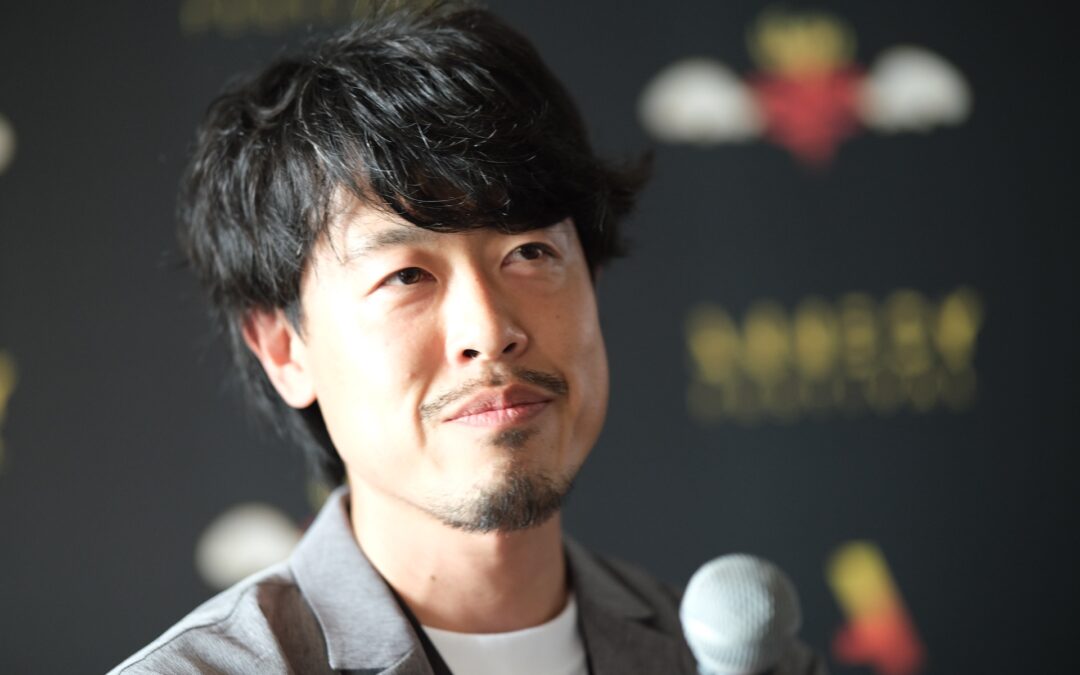
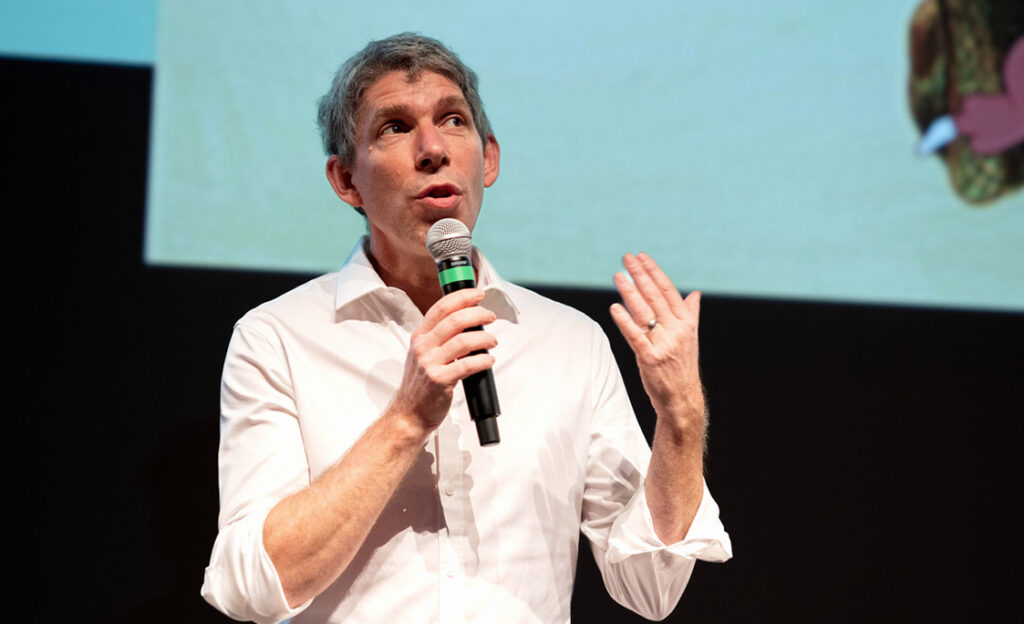
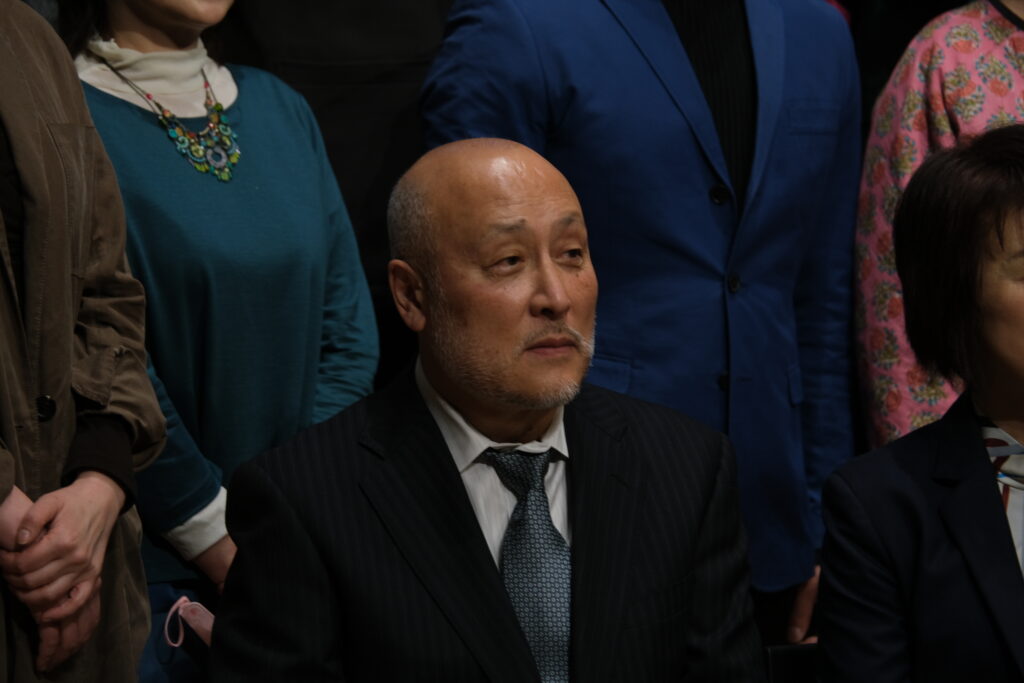
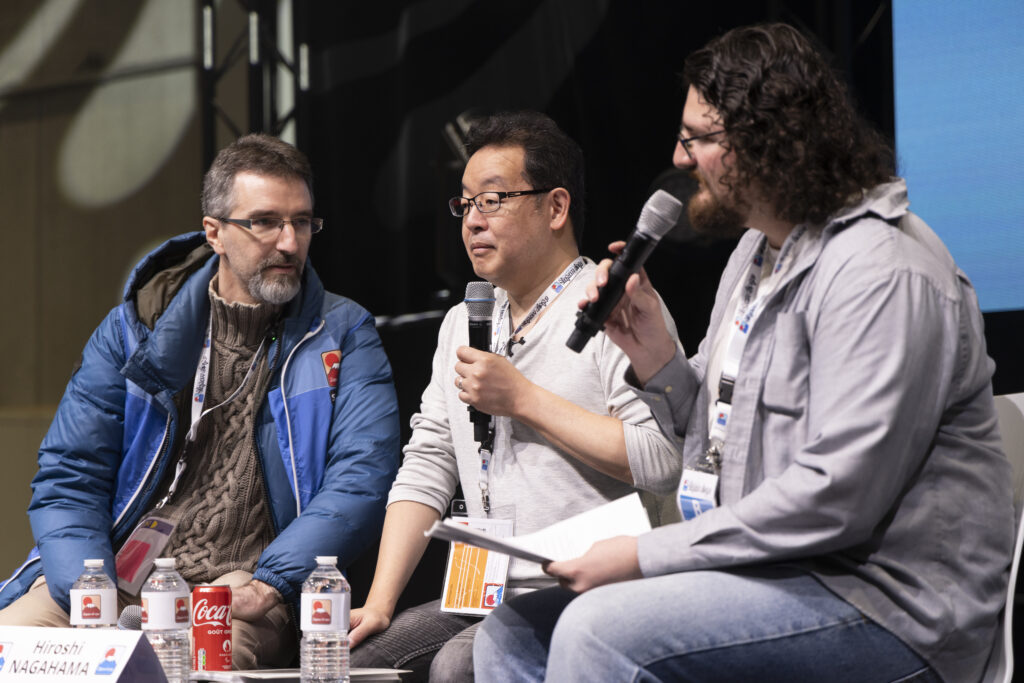
pretty disappointing to hear them use terms like lazy animator and incorporation of ai
How disrespectful from them …
Very disgusting words coming from mediocre directors and humans …